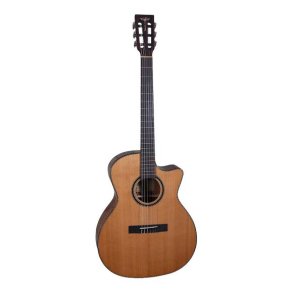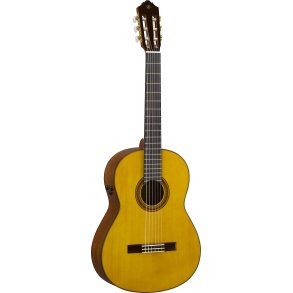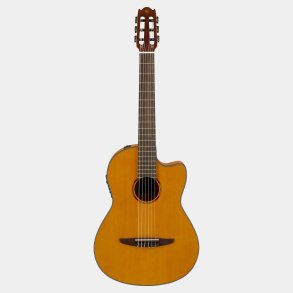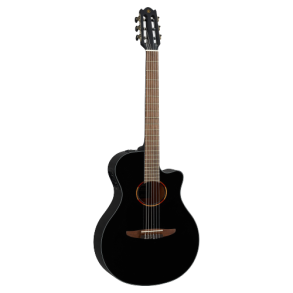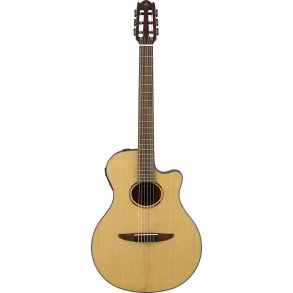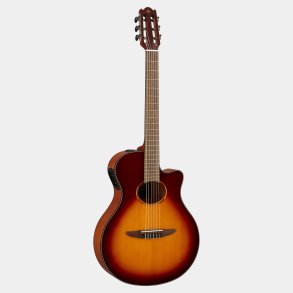Spanish guitar with pickup
A Spanish guitar is a classical stringed instrument. The ideal beginner's guitar and a favorite among classical musicians. See our large selection of Spanish guitars here.
When choosing a guitar, the choice is often between a Spanish and a Western guitar. Although they may look similar from a distance, there are significant differences between them.
What is a Spanish guitar?
A Spanish guitar - or classical guitar as it's also known - is an ideal guitar for children and beginners. It's not too big to sit with and the soft nylon strings are very friendly to start out on. If you're learning your first chords or simple fingerpicking, the Spanish guitar is the favorite.
That doesn't make it unattractive to professional musicians. The Spanish guitar is still the preferred stringed instrument in classical music.
If you're more into the Western guitar with steel strings and a sharper sound, that's fine too. But who says you have to choose? Buy one of each. They say that the one who leaves the most guitars behind when he dies - that's the one who wins.
How do you change the strings on a Spanish guitar?
That's a good question. If it's your first time changing the strings on your Spanish guitar, you can ask your local music store to show you how. Alternatively, you can google your way to a tutorial online. It's often easier to be shown how to do it rather than having to read the procedure.
How often should the strings be changed? Again, a very good question. If you're a practiced guitarist, you probably have a good sense of when it's time to change strings. If you're the type of person who forgets, it's a good idea to put string changes on your calendar so you get a reminder. How often the calendar should remind you to change strings depends on how much you use (or abuse) your guitar.
Over time, however, you'll learn to hear when it's time to change strings. When the sound becomes more dead and both bass and treble start to disappear from the soundstage, it's high time.
One last tip in relation to strings: Change them all at once - just once in a while. They often break one at a time, so it makes sense to change them continuously. But it gives the best sound and balance between the strings when they are changed at the same time.

